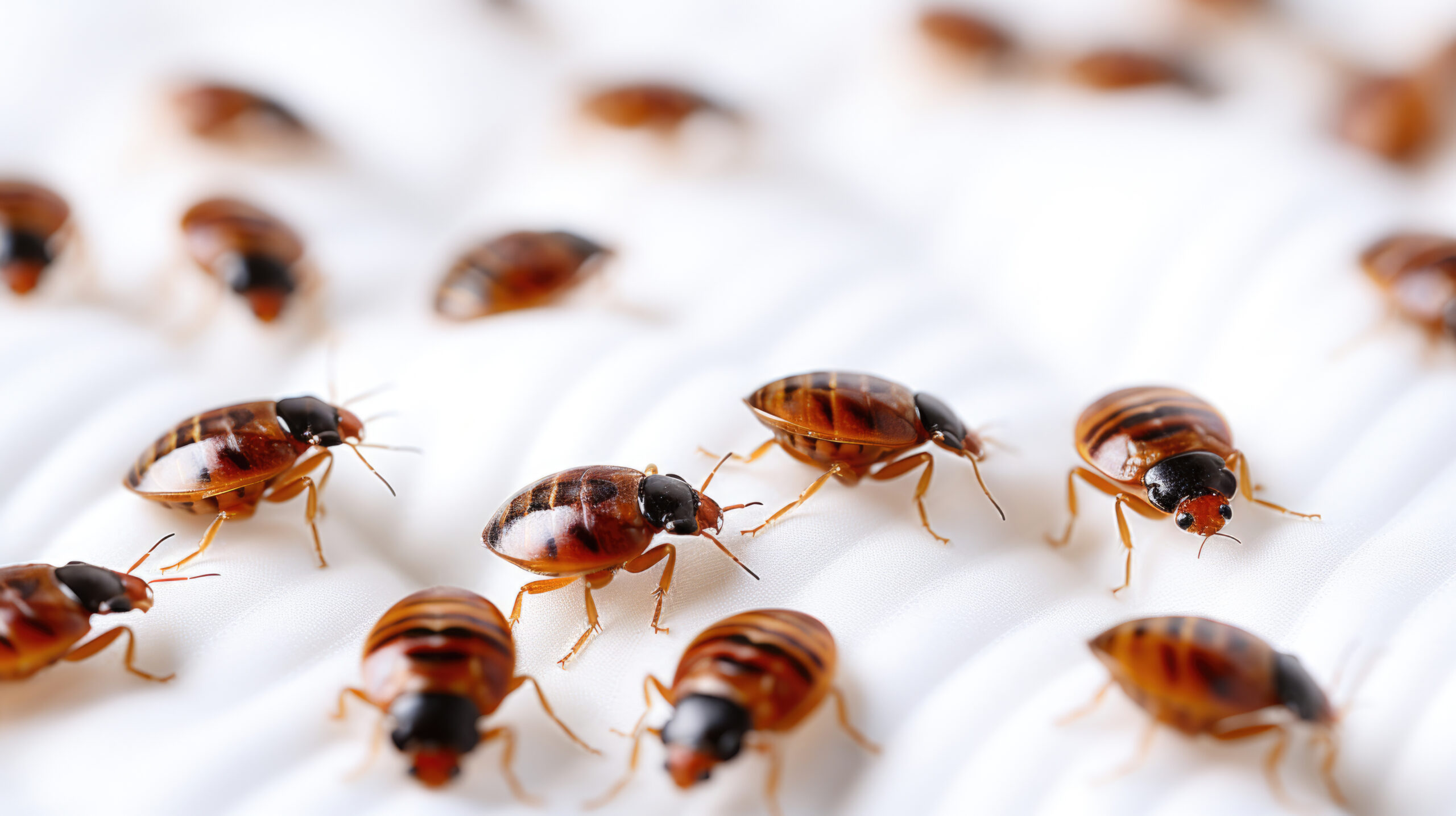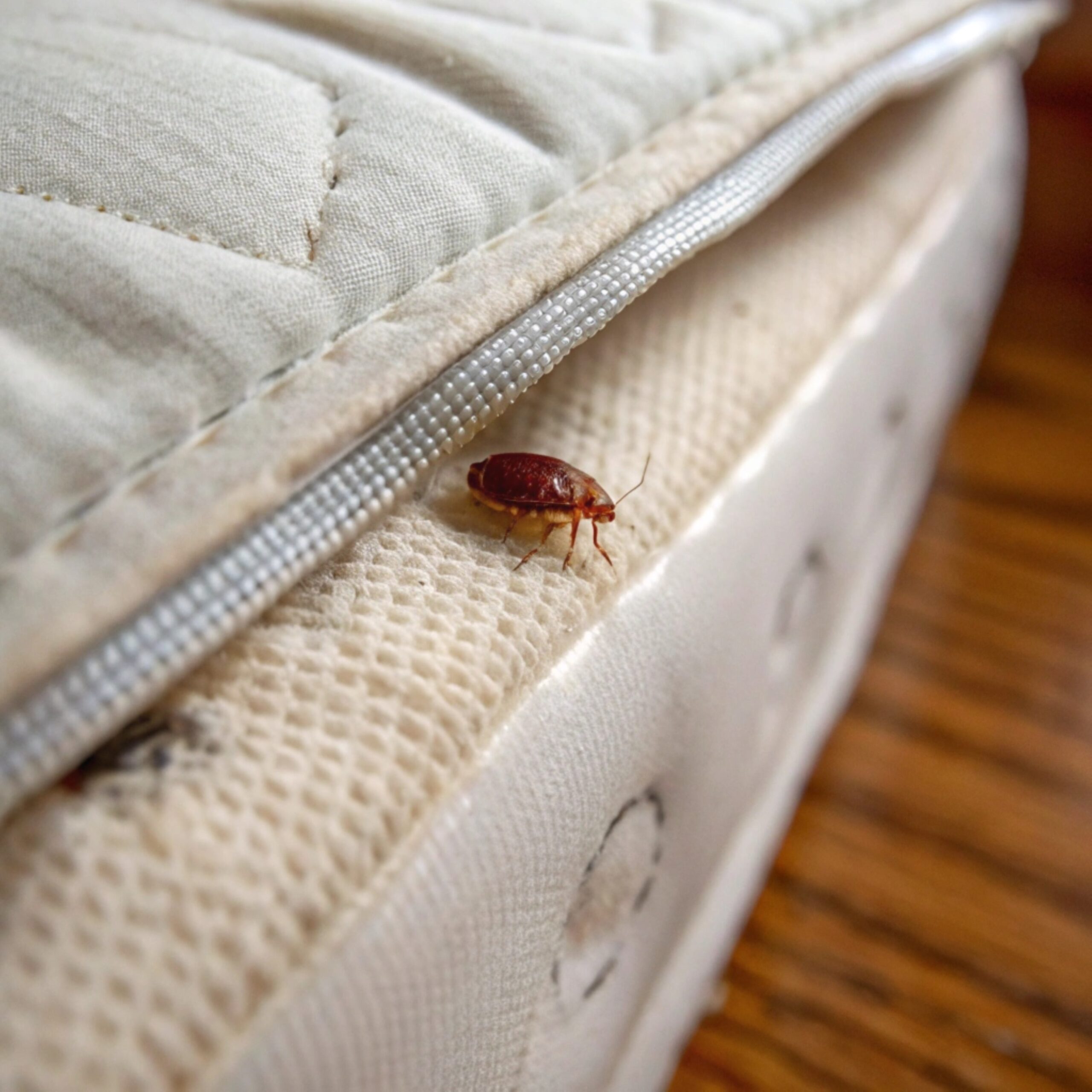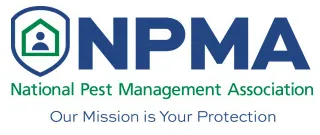Bed Bugs

Bed Bugs Exterminator in Mt. Juliet, Tennessee
Bed Bug Information
Once thought to be a thing of the past, bed bugs have made a resurgence, infecting even the nicest homes, apartments, dormitories, and hotels. These pests are carried from one place to another on clothing, luggage, furniture, and boxes, and will set up residence in a new location quickly. They have also been found in movie theaters, stores, and other public venues.
Bed Bugs
The exact cause of their increased presence is not known. However, researchers at institutions such as the University of Kentucky and the University of California have recognized that new bed bug populations are highly resistant to common pesticides. According to the Centers for Disease Control, this phenomenon paired with our upwardly mobile society and decreased local/state pest prevention programs are all contributing factors. Bed bugs feed primarily on human blood and are capable of living for long periods of time without eating. Once an infestation occurs, it can be extremely difficult to rid a home of bed bugs. These parasites can also be mistaken for wood ticks, spider beetles, woodlice, or carpet beetles, making them hard identify and treat appropriately.
Physical Characteristics:
- Size: Adult bed bugs are typically 4-5 mm (about the size of an apple seed) in length.
- Color: They are usually reddish-brown to brown, but their color can become darker and redder after feeding.
- Body Shape: Bed bugs have a flat, oval-shaped body, which allows them to hide in cracks and crevices easily.
- Behavior and Habits: Nocturnal: Bed bugs are primarily active at night and prefer to feed on their hosts while they are sleeping.
- Feeding: They feed by piercing the skin with their specialized mouthparts, withdrawing blood. Bed bug bites can result in itchy welts on the skin.
- Hiding Places: Bed bugs are adept at hiding and tend to live near sleeping areas. They can be found in mattresses, bed frames, headboards, and other furniture, as well as in electrical outlets, wall voids, and behind wallpaper.
- Reproduction: Female bed bugs can lay hundreds of eggs during their lifetime. The eggs are tiny, white, and hard to see without magnification. After hatching, bed bug nymphs go through several molts before reaching adulthood.
- Survival: Bed bugs can survive for several months without feeding, making them resilient pests. However, they prefer to feed regularly when hosts are available.
- Movement: Bed bugs can crawl relatively quickly but do not jump or fly. They are primarily spread from place to place by hitching rides on luggage, clothing, and personal belongings.
Signs of Bed Bug Infestations in Mt Juliet TN

- Bites: Bed bug bites may appear as itchy, red welts on the skin, often in a linear or clustered pattern.
- Blood Stains: After feeding, bed bugs may leave behind small bloodstains on sheets, pillowcases, or clothing.
- Fecal Stains: Dark, rust-colored fecal stains on bedding, mattresses, or nearby surfaces are a common sign of bed bug activity.
- Molted Skins: Bed bug nymphs shed their skins as they grow, leaving behind translucent exoskeletons.
- Mattress and Encasements: Special mattress and box spring encasements can trap bed bugs and prevent them from escaping or infesting these items further.
- Cleaning and Decluttering: Reducing clutter and maintaining a clean environment can make it easier to detect and treat bed bugs. Wash and dry bedding, clothing, and linens at high temperatures to kill any bed bugs present.
- Monitoring: After treatment, monitoring for any signs of bed bug activity is crucial to ensure the infestation has been successfully eradicated.
- Prevention: Take preventive measures to avoid future infestations, such as inspecting used furniture, regularly checking for signs of bed bugs, and being cautious when traveling.
In collaboration with Armor Termite, effective bed bug control is achievable through their professional expertise, safe treatment methods, and commitment to ensuring your home remains bed bug-free.
Armor Termite Treatment Method For Bed Bugs
Aprehend® is composed of Beauveria bassiana fungal spores applied in a proprietary and patented formulation.
Aprehend® is sprayed strategically in narrow bands where bed bugs are known to walk. Direct spray contact is not necessary. Bed bugs of all life stages, sex, or feeding status are killed within four to ten days following short-term contact with a treated surface. The fungal spores germinate within 20 hours of contact and then penetrate the cuticle of the bed bug and colonize inside, resulting in death.
How Should You Prepare for a Bed Bug Treatment?
Dealing with bed bugs can be a hassle, but preparing for effective treatment doesn’t have to be. Here’s a step-by-step guide to ensure you’re thoroughly prepared:
- Declutter Your Space
-
- Begin by tidying up the areas where bed bugs are commonly found, such as bedrooms and living rooms.
- Remove any items from under the bed and clear out your closet.
- Launder Fabrics
- Wash and dry bed linens, curtains, and clothing on the highest heat setting.
- Seal these cleaned items in airtight plastic bags to prevent re-infestation.
- Vacuum Thoroughly
- Vacuum floors, furniture, and mattresses to eliminate any visible bed bugs and eggs.
- Dispose of the vacuum bag immediately in an outside trash bin.
- Dismantle Bed Frames
- Take apart bed frames to expose bed bug hiding spots. Be sure to follow any guidelines given by your pest control professional.
- Move Furniture Away from Walls
- Create easy access for the treatment team by moving furniture at least two feet away from walls.
- Unplug Electronics
- Disconnect electronic devices and appliances, but do not remove them. Bed bugs can hide in them, and they may need to be treated.
- Protect Personal Items
- Store personal items like books, toys, and anything that can’t be laundered in sealed plastic bags.
- Inform Neighbors (if applicable)
- It’s often advised to let your neighbors know about the treatment to help prevent the spread from adjoining units.
Should You Throw Out Your Mattress If You Have Bed Bugs?
No, you shouldn’t throw out your mattress if you have bed bugs. Doing so can actually worsen the situation by spreading the infestation to other areas. Instead, there are more effective strategies you can employ:
- Use Mattress Encasements: Specially designed mattress encasements trap bed bugs inside, preventing them from escaping and eventually causing them to starve.
- Regular Cleaning: Vacuum your mattress thoroughly to remove any visible bugs and their eggs. Dispose of the vacuum cleaner bag outside your home immediately after use.
- Professional Pest Control: Hiring a pest control professional can ensure that all bed bugs are exterminated effectively. They can treat your mattress and surrounding areas to eliminate the infestation.
By following these steps, you can manage a bed bug problem without the need to dispose of your mattress.
How Fast Do Bed Bugs Spread and Multiply?
Bed bugs are notorious for their rapid reproduction and ability to spread. Adult female bed bugs are particularly prolific, laying between one to twelve eggs each day. Over their lifetime, a single female can produce anywhere from 200 to 500 eggs.
Given favorable conditions, these eggs can hatch within six to ten days. Newly hatched nymphs immediately start searching for a blood meal, essential for their growth and development.
In ideal environments, nymphs mature into adults in just five weeks. This swift life cycle means that a small infestation can escalate dramatically within a matter of weeks.
Here’s a quick breakdown:
- Egg laying: 1-12 eggs per day
- Hatch time: 6-10 days per egg
- Maturity: From nymph to adult in approximately 5 weeks
Once an infestation begins, bed bugs can spread through various means:
- Travel: Bed bugs can hitch a ride on luggage, clothing, and personal belongings, making hotels and public transport common vectors.
- Furniture: Used or second-hand furniture often hides bed bugs, spreading them to new locations.
- Close Proximity: In multi-unit buildings, such as apartments, they can migrate between units through electrical outlets, plumbing, or simply moving across walls and floors.
To effectively control bed bugs, it’s crucial to act quickly and consider professional pest management, as their rapid reproduction and dispersal make DIY methods challenging.
Flea Bites vs. Bed Bug Bites: Key Differences Uncovered
Appearance and Location
Flea Bites:
- Looks Like: Small, red bumps often with a red halo at the center.
- Common Areas: Typically found around the ankles, legs, and waist. Fleas target easy-to-reach areas, especially those close to the ground.
- Pattern: Flea bites usually appear in clusters or lines of three, known as “breakfast, lunch, and dinner.”
Bed Bug Bites:
- Looks Like: Red, swollen bumps that can have a darker red spot in the middle. They may sometimes form blister-like spots.
- Common Areas: Often on exposed skin like the face, neck, arms, and hands. Bed bugs prefer areas that are exposed while you’re sleeping.
- Pattern: Bed bug bites also tend to appear in a line or a zig-zag pattern, reflecting the bug’s movement.
Symptoms and Reactions
Flea Bites:
- Itchiness: Flea bites are intensely itchy, which can lead to excessive scratching and potential secondary infections.
- Sensitivity: Some individuals may develop a more severe allergic reaction, including hives and swelling.
Bed Bug Bites:
- Itchiness: These bites can also be itchy but generally less intense compared to flea bites.
- Reaction Over Time: Bed bug bite reactions can take longer to develop, sometimes several days after the initial bite.
- Long-Lasting: Bites might remain visible for several days to weeks.
Behavior and Habitat
Fleas:
- Behavior: Fleas are typically brought into the home via pets. They can jump long distances to reach their hosts.
- Habitat: They prefer living in carpeting, pet bedding, and upholstery.
Bed Bugs:
Habitat: They hide in small crevices, including mattress seams, bed frames, and behind picture frames.
Behavior: Bed bugs are sneaky hitchhikers, often entering homes through luggage, furniture, and clothing.
That Kills Bed Bugs Instantly?
Several methods can eradicate bed bugs on contact, ensuring immediate results. Here are some of the most effective approaches:
- Chemical Pesticides: These are specially formulated to target bed bugs. Fast-acting insecticides such as pyrethrins, pyrethroids, and certain desiccants can be very effective. Be cautious and follow the manufacturer’s instructions to ensure safe use.
- Extreme Heat: One of the most efficient ways to kill bed bugs instantly is by exposing them to high temperatures. Using a steam cleaner with a heat output of at least 200°F (93°C) can kill bed bugs at all life stages upon direct contact.
- Diluted Rubbing Alcohol: Isopropyl alcohol can be an effective contact killer for bed bugs. When bed bugs come into direct contact with this solution, it acts quickly to dehydrate and kill them. However, rubbing alcohol is flammable and can pose a safety risk if used improperly.
While these methods can provide immediate relief, they alone might not guarantee complete eradication. It’s often advisable to use a combination of treatments and seek professional pest control services to ensure all bed bugs and their eggs are thoroughly eliminated.
Contact Information
6160 Hampton Hall Way
Hermitage, Tennessee, 37076, United States
Mon-Fri
8:00 AM - 5:00 PM
Sat
8:00 AM - 12:00 PM
Sun
Closed
Pest Problem? No worries, we can help!
We will help you find the right treatment for your home or business.
Get your free estimate,
no obligation quote
We are committed to maintaining open communication with our valued customers throughout the entire pest control process. If you have any inquiries, need estimates, or have questions about our services, please don’t hesitate to reach out to us at your convenience. We eagerly anticipate the opportunity to serve you in the near future.
6160 Hampton Hall Way
Hermitage, Tennessee, 37076, United States
Sat 8:00 AM - 12:00 PM
Sun Closed



